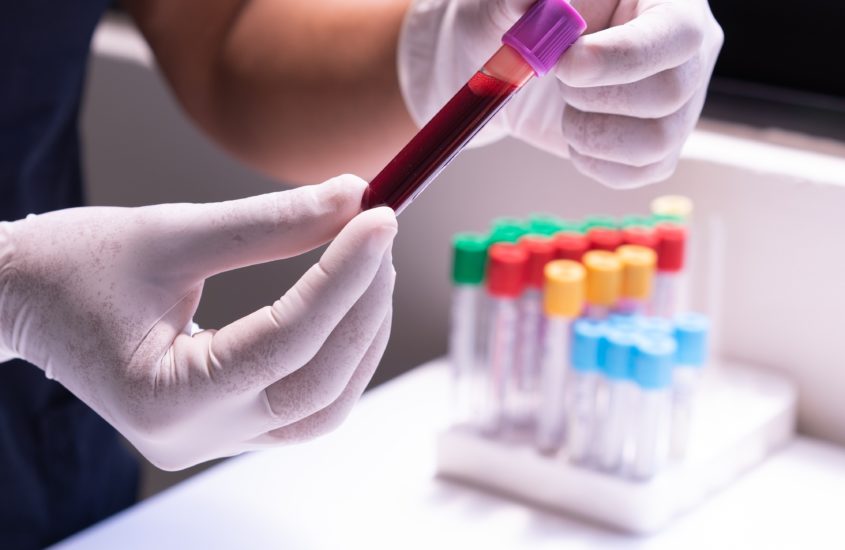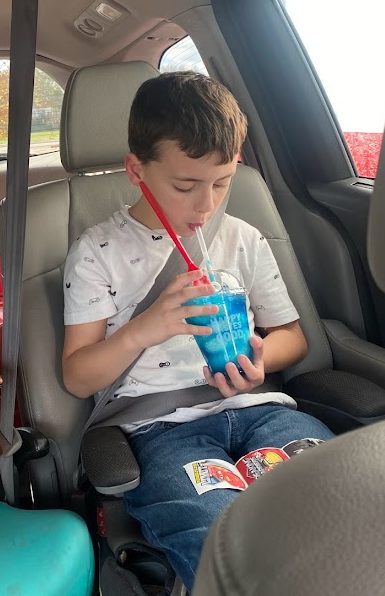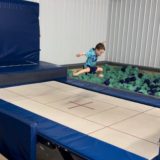Blood Draws

Diving back into the biomedical side of things for those families that are interested. If you haven’t checked out Autism and Integrative Medicine, be sure to take a look now. It will give you an overview of some of the items I will be discussing these next couple of weeks. Overall, we have been very pleased with the progress that we have seen in our son from the recommendations of our integrative pediatrician, but not everything that comes along with seeing this doctor is easy. One of the main goals of the practice is to take a deeper look into the medical side of their patient and try to find things that may be able to help. One of the tools they use to analyze things are blood draws.
The doctor uses the blood draw to examine many components of our son, such as his vitamin levels, to help determine what is within range. Areas identified to be suboptimal would then be given recommendations to correct the issue, such as diet change suggestions or adding in a supplement. Having a child with high sensitivities to foods, like our Damion, means that he is probably lacking in some vitamins which are important for his growth and development. Our goal, as always, is to take away as many barriers as we can for him, and by utilizing this doctor, this is a big way we feel we can help.
Anyone with kids can imagine that blood draws are not a cake walk, I mean, I’m an adult and getting a blood draw is no treat for me either. Most kids that you can talk through the process with still have a pretty difficult time, add in the communication barriers we face with our kids on the spectrum and you can imagine how well the procedure goes. But we have been doing these blood draws now almost annually for 6 years so we have had some time to work out some of the kinks with the process. I’m not going to lie, it is still tough, but these things have helped us a bit.
- The Waiting is the Hardest Part
We have been to Children’s hospitals and they did a great job with the blood draw portion overall, but we found the wait to be excruciatingly long (hours) and the bill to be a lot higher than going somewhere else. After trying out a few different places we found our preferred, LabCorp. The LabCorp that we go to allows you to do walk-ins or make an appointment ahead of time. We have never waited more than 15 minutes, and if you have an appointment, they now even let you wait in the car! When Damion gets familiar with a place, especially a place that he familiarizes with an non-preferred activity (or a dreaded activity such as this), the waiting really can be the hardest part for everyone involved.
2. Go to the Pros
Places such as regular doctor’s offices usually have people that have been trained to draw blood, but it is not their primary job. As I said, Children’s Hospitals are great but they don’t meet our wait time criteria. The LabCorp we visit has been great every time. This is what these people do for a living day in and day out. They gave us options on ways to help hold Damion to keep him still for the process, they are fast and accurate every time we go. No extra work or pokes because someone couldn’t find a vein on a wiggly child.
3. Bring a Helper Along
The one downside I will say to the stand-alone blood draw facilities like we have come to prefer, is that they are minimally staffed. I have been in there a time or two when there are multiple people working, but most of the times we have gone there is only one person staffed for the day. Bringing a helper to assist in holding your kiddo is very important. Damion just continues to get stronger each year, so me being able to handle this job alone is not as doable as it once was.
4. Distraction
If you are able to distract your kiddo, the process can go a bit smoother. The pain in blood draws (if done correctly) is generally in the initial stick. But for a kid who is upset at the thought of what is being done, the whole draw can be pretty rough if they can’t settle down at all. Blocking their vision from what is taking place seems to work best for us. I generally try to sing simple songs to Damion that I know he likes as well to help pass the few minutes that the draw takes.
5. Band-Aids and Rewards
Damion is not one who has ever been good at keeping things like band-aids on. Especially in a distraught mood, like after a blood draw. I would try to just put pressure for a few minutes on the area (distraction can be key once again). Or if they are willing to wrap the area that can help as it is usually done bleeding by the time the child is able to get the wrap removed. Offering rewards before the start of the blood draw process have never done much in the way to help us, but by the time you get to the Band-Aid portion, rewards may go over a little better.
I doubt we will ever find a solution that makes blood draws a super seamless process. Doing something annually never gives us a whole lot of practice to work out all the issues, but I’m not sad that we don’t have to go often enough to get used to it. Just one of those things in life that we have learned to power through, and with the prep I described above we are normally done with the whole procedure in under 15 minutes and off to the better parts of our day.





